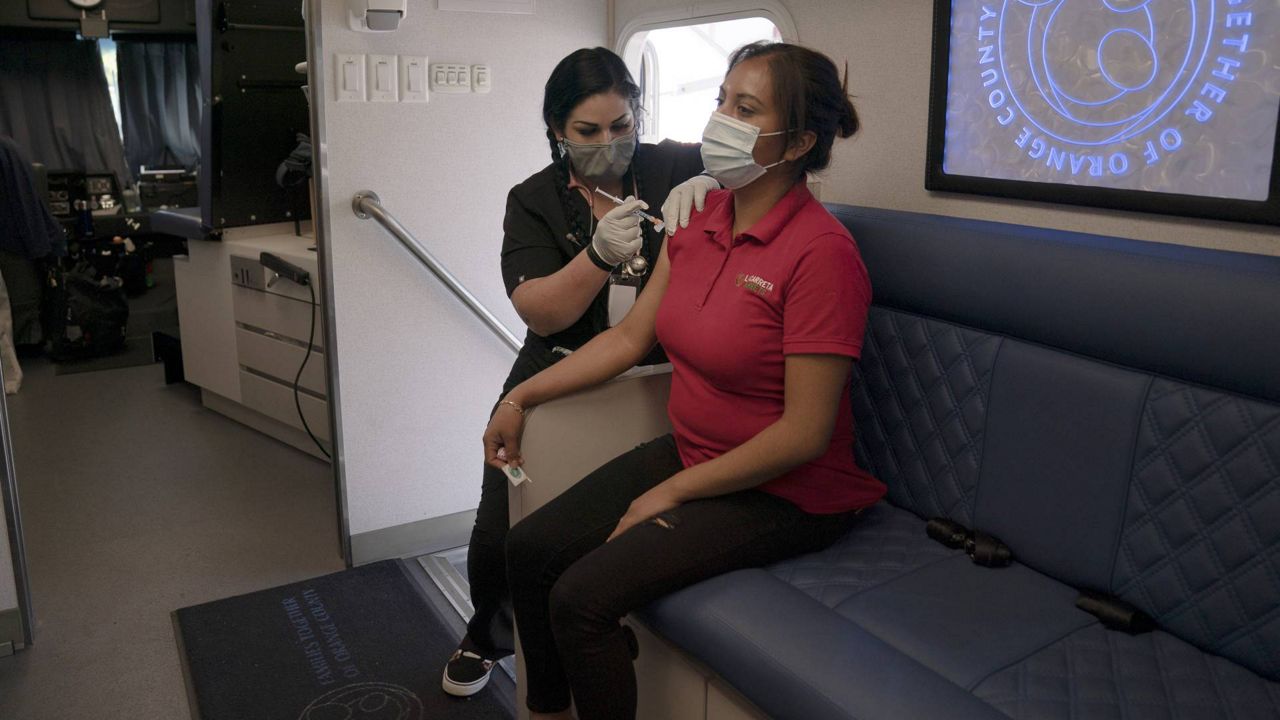SANTA ANA, Calif. (CNS) — Orange County's weekly COVID-19 averages, coupled with the daily statistics released Tuesday, indicate the county's most recent delta-variant surge might have leveled off, but a UC Irvine epidemiologist remains on alert for another wave linked to a return to classroom instruction.
According to weekly averages released on Tuesdays, the county's average daily case rate per 100,000 residents increased from 20.2 to 22.2 , while the test positivity rate ticked down from 8.1% to 8%.
What You Need To Know
- Orange County reported another 517 COVID-19 infections on Tuesday
- The county's weekly COVID-19 averages, coupled with the daily statistics released Tuesday, indicate the county's most recent surge might have leveled off
- The number of coronavirus patients hospitalized dropped from 570 on Monday to 564
- The number of intensive care unit patients increasing from 116 to 132
The county's Health Equity Quartile rate, which measures the impact on disadvantaged communities, remained at 8.4%.
"The positivity rates are looking pretty good," Andrew Noymer, an epidemiologist and UC Irvine professor of population health and disease prevention, told City News Service.
The number of patients hospitalized dropped from 570 on Monday to 564, with the number of intensive care unit patients increasing from 116 to 132. Another 517 infections were reported Tuesday, raising the cumulative total to 281,609 since the pandemic began, according to the Orange County Health Care Agency.
The county had 23.4% of its adult ICU beds and 70% of its ventilators available.
Experts say hospitalizations are a more important statistic than case numbers because any surge can be exacerbated by an overburdened health care system, and case numbers are expected to rise as schools and businesses require more people to get tested.
"Hospitalizations are stable since last Wednesday," Noymer said. "We're at the point where everyone wants to know what's happening with schools and how school reopening will result in community-wide cases."
The evidence of how students returning to school affect the infection rates may show up next week, Noymer said.
"It's still a bit early as kids have to infect parents and parents have to get sick and then it can take a generation or two of the virus, which means a week or so before we see an increase in hospitalizations," Noymer said. "It's too early to high five ourselves just yet."
The ICU number is difficult to gauge, he added.
"It's less than Friday," Noymer said. "Beds get moved around and get reclassified as ICU. That number is really hard to understand."
The OCHCA also reported six more fatalities Tuesday, boosting the overall death toll to 5,184. There have been eight new deaths reported so far this week, with five of them occurring in August, two in February and one in January.
The death toll for August is now 14, with 15 for July, 16 for June, 23 for May, 43 for April, 199 for March, 615 for February, 1,571 for January — the deadliest month of the pandemic — and 969 for December, the next deadliest.
Noymer said the rash of recent deaths "is a little high compared to recent trends," but the fatality rate will not exceed the winter wave.
"Deaths are not going to be as high as before — that's the vaccine and thank goodness," Noymer said. "I don't expect to return to the mortality levels of the winter — ever."
Noymer was hopeful that the U.S. Food and Drug Administration's approval of the Pfizer vaccine for anyone 16 and older will help increase vaccination rates.
"If anyone was waiting for the FDA to approve it they have that approval now for 16 and up," Noymer said.
The vaccine is still being administered under emergency use authorization for ages 12 to 15, Noymer said.
Dr. Clayton Chau, the county's chief health officer and director of the OCHCA, told the Board of Supervisors on Tuesday that the county's vaccination rate was the highest among largest counties in the state.
For those eligible for a vaccine, 76.3% have received at least one dose, Chau said. Of the eligible population, 68% were considered fully vaccinated, which exceeds the state average, Chau said.



